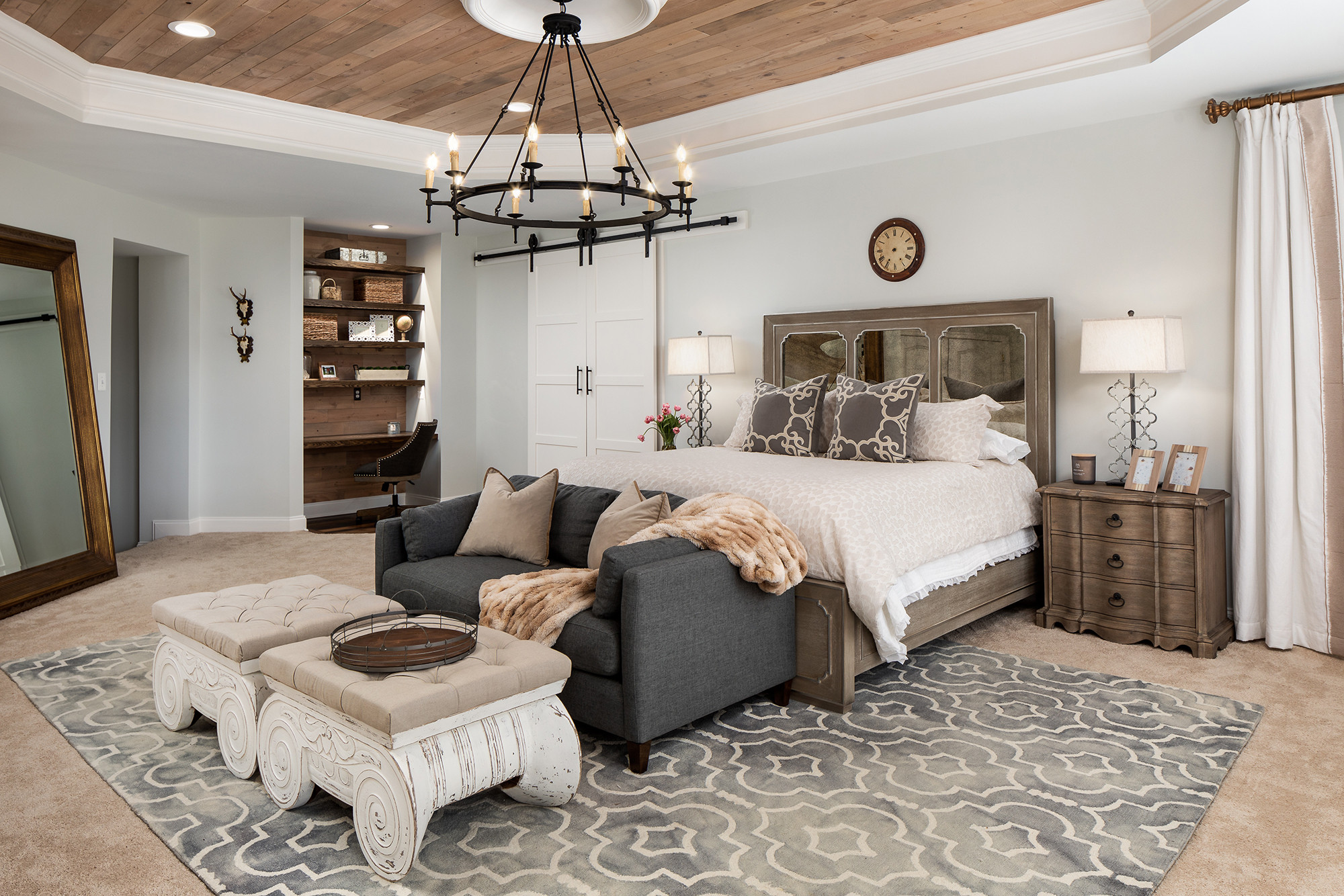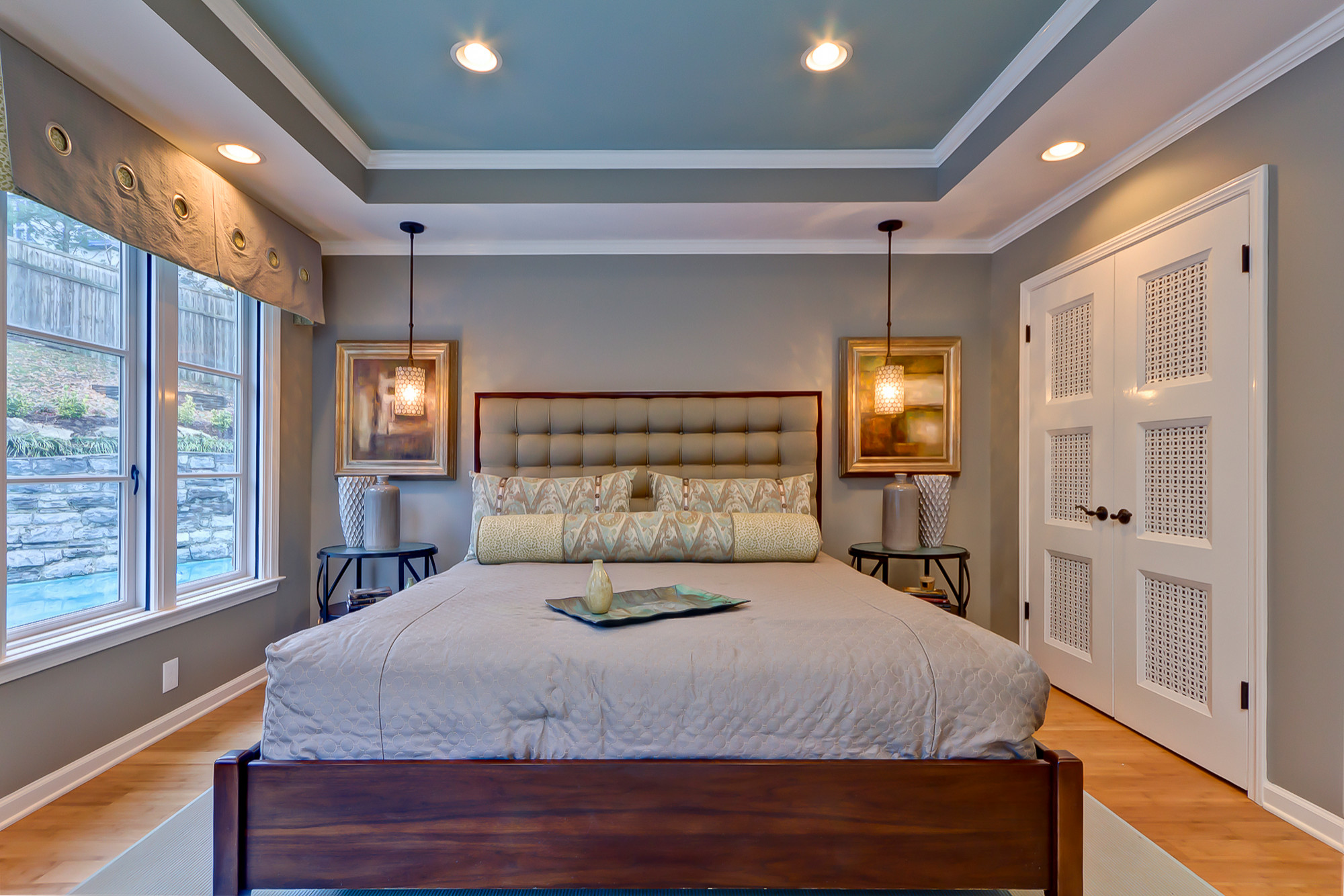What is a Tray Ceiling?

A tray ceiling is a type of architectural design that adds visual interest and dimension to a room. It involves creating a recessed area in the ceiling, often in the center of the room, that resembles a tray.
Description of a Tray Ceiling
Tray ceilings are characterized by their distinctive shape, depth, and materials. They typically feature a recessed, rectangular or square area in the center of the ceiling, which is surrounded by a raised perimeter. The depth of the tray can vary, with shallower trays being more subtle and deeper trays creating a more dramatic effect.
Common Features of Tray Ceilings
- Shape: Tray ceilings can be designed in various shapes, including rectangular, square, circular, or even more intricate geometric patterns.
- Depth: The depth of the tray can range from a few inches to several feet, depending on the desired effect and the room’s height.
- Materials: Tray ceilings can be constructed from a variety of materials, including drywall, plaster, wood, or even metal.
Examples of Tray Ceiling Designs
- Simple Tray Ceiling: This design features a basic rectangular or square tray with a shallow depth, often used to add a touch of elegance to a room without being overly dramatic.
- Coffered Tray Ceiling: This design incorporates a series of recessed panels or coffers within the tray, creating a more intricate and visually stimulating effect.
- Layered Tray Ceiling: This design features multiple levels of trays, with each level recessed further than the previous one. This creates a sense of depth and complexity.
Benefits of Tray Ceilings in a Bedroom
- Enhanced Aesthetics: Tray ceilings add visual interest and dimension to a room, making it feel more spacious and luxurious.
- Improved Lighting: The recessed area of a tray ceiling can be used to install recessed lighting fixtures, which provide a more even and flattering light distribution.
- Increased Ceiling Height: A tray ceiling can make a room feel taller, especially if the depth of the tray is significant.
- Focus on the Center of the Room: Tray ceilings naturally draw attention to the center of the room, making it an ideal focal point for furniture or décor.
Potential Drawbacks and Considerations
- Cost: Tray ceilings can be more expensive to install than a standard flat ceiling, as they require additional labor and materials.
- Space Reduction: A deep tray ceiling can reduce the overall height of a room, which may be a concern in rooms with low ceilings.
- Maintenance: Tray ceilings can be more difficult to clean and maintain than flat ceilings, as dust and cobwebs can accumulate in the recessed areas.
Types of Tray Ceilings

Tray ceilings offer a unique way to add dimension and elegance to a bedroom. The recessed panels create a sense of depth and visual interest, while the elevated center portion draws the eye upwards, making the room feel larger and more luxurious. The choice of tray ceiling type will depend on your budget, the size of the room, and your desired aesthetic.
Single-Level Tray Ceilings, What is a tray ceiling in a bedroom
Single-level tray ceilings are the simplest and most affordable type. They feature a single, recessed panel that extends around the perimeter of the room. This creates a subtle, yet elegant, visual effect.
Advantages:
- Cost-effective: Single-level tray ceilings are relatively inexpensive to install, making them a budget-friendly option.
- Easy to install: The simple design makes them easy to install, reducing labor costs.
- Versatile: They can be incorporated into a variety of bedroom designs, from modern to traditional.
Disadvantages:
- Limited visual impact: While they add some visual interest, single-level tray ceilings don’t have the same dramatic effect as multi-level designs.
- Less dramatic: Compared to multi-level tray ceilings, they may not provide the same sense of grandeur or spaciousness.
Examples:
- A single-level tray ceiling with a simple cornice molding can enhance a minimalist bedroom design.
- A single-level tray ceiling with recessed lighting can create a cozy and intimate ambiance in a small bedroom.
Double-Level Tray Ceilings
Double-level tray ceilings feature two recessed panels, one inside the other. This creates a more dramatic and layered effect, making the room feel larger and more luxurious.
Advantages:
- Enhanced visual impact: Double-level tray ceilings add a significant amount of visual interest to the room, making it feel more spacious and grand.
- Increased sense of depth: The layered design creates a sense of depth and dimension, making the ceiling feel higher.
- Versatility: They can be customized with different molding profiles and lighting fixtures to suit various design styles.
Disadvantages:
- Higher cost: Double-level tray ceilings are more expensive to install than single-level designs due to the increased complexity.
- More labor-intensive: Installing a double-level tray ceiling requires more skilled labor, which can increase installation costs.
- May not be suitable for all rooms: In smaller bedrooms, a double-level tray ceiling might make the room feel cramped or overwhelming.
Examples:
- A double-level tray ceiling with crown molding and recessed lighting can create a sophisticated and elegant look in a master bedroom.
- A double-level tray ceiling with a contrasting paint color can add a touch of drama and visual interest to a contemporary bedroom.
Coffered Ceilings
Coffered ceilings are a type of tray ceiling that features a grid of recessed panels, often with intricate molding details. They are known for their classic and sophisticated look, adding a touch of architectural grandeur to the room.
Advantages:
- Elegant and sophisticated: Coffered ceilings create a timeless and elegant aesthetic, adding a touch of architectural grandeur to the bedroom.
- Increased visual interest: The intricate grid pattern and molding details add a significant amount of visual interest to the ceiling.
- Versatile: Coffered ceilings can be customized with different panel sizes, molding profiles, and paint colors to suit various design styles.
Disadvantages:
- Most expensive: Coffered ceilings are the most expensive type of tray ceiling to install due to the complex design and labor requirements.
- More complex installation: Installing a coffered ceiling requires skilled labor and precise measurements, which can increase installation costs.
- May not be suitable for all rooms: Coffered ceilings can make a small bedroom feel even smaller, so they are best suited for larger rooms.
Examples:
- A coffered ceiling with a classic molding profile and a neutral paint color can enhance the traditional charm of a guest bedroom.
- A coffered ceiling with a modern molding profile and a bold paint color can add a touch of drama and sophistication to a contemporary master bedroom.
Tray Ceilings in Bedroom Design: What Is A Tray Ceiling In A Bedroom
:max_bytes(150000):strip_icc()/1-67d4695788364fd8918c9d5c14c2a31f.jpeg)
Tray ceilings are a popular design element that can elevate the aesthetic appeal of any bedroom. They add a sense of grandeur and sophistication, creating a focal point that draws the eye upward. This architectural feature can dramatically impact the overall feel of a bedroom, making it appear larger and more luxurious.
Lighting and Ambiance
The unique shape of a tray ceiling provides an excellent opportunity to enhance the lighting and ambiance of a bedroom. The recessed space created by the tray offers a perfect location for installing various lighting fixtures.
- Recessed lighting: This type of lighting provides a subtle and even illumination, ideal for creating a cozy and inviting atmosphere.
- Chandeliers: Chandeliers can add a touch of elegance and sophistication to a bedroom. They are particularly well-suited for tray ceilings as they can be hung from the center of the tray, creating a dramatic focal point.
- Pendant lights: Pendant lights offer a more contemporary and minimalist look. They can be used to highlight specific areas of the bedroom, such as a reading nook or a dressing table.
Incorporating Tray Ceilings into Different Bedroom Styles
Tray ceilings can be seamlessly incorporated into various bedroom styles, from modern and contemporary to traditional and eclectic.
- Modern bedrooms: In modern bedrooms, tray ceilings can be used to create a clean and minimalist aesthetic. They can be painted in a neutral color, such as white or gray, to complement the sleek lines of the furniture.
- Traditional bedrooms: For traditional bedrooms, tray ceilings can be embellished with crown molding or decorative details. They can be painted in a warm color, such as cream or beige, to create a sense of warmth and comfort.
- Contemporary bedrooms: In contemporary bedrooms, tray ceilings can be used to create a bold and dramatic statement. They can be painted in a dark color, such as black or navy, to add a touch of sophistication and intrigue.
